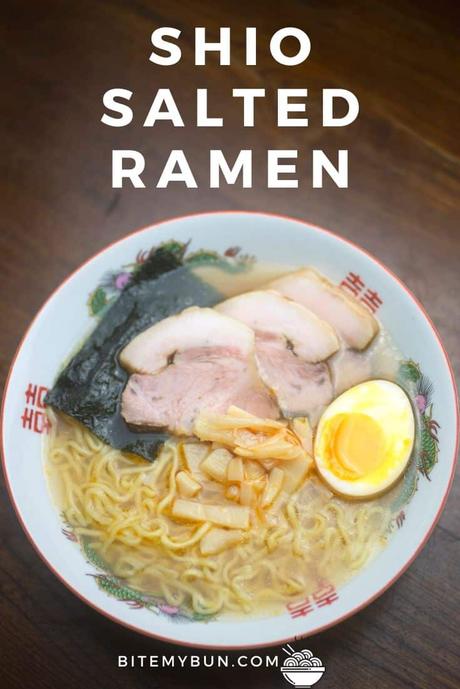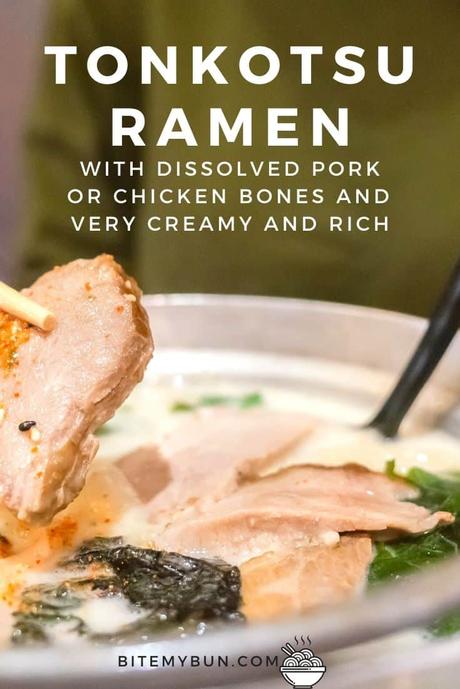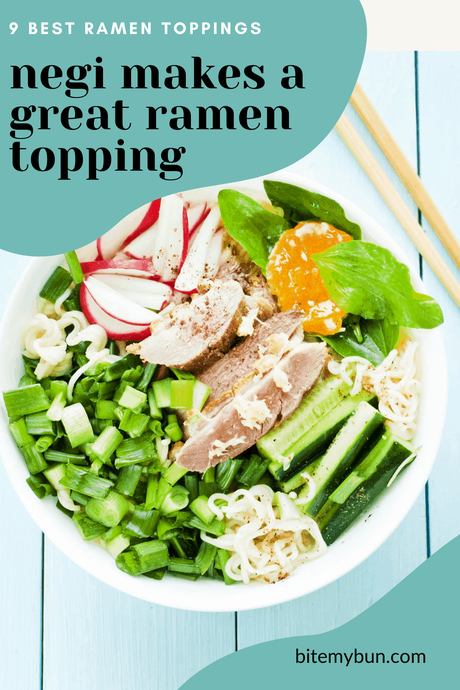Japanese cuisine is famous worldwide for its delicious and unique flavors.
If it’s made with fresh ingredients on the spot, then ramen is a healthy noodle dish. The preparation methods are quite different from other Japanese cuisines. Ramen plays an important role in this aspect.
Ramen is a Japanese term for noodle soup. It contains vegetables, meat, and special seasonings in a broth. It’s one of the most liked dishes in Japan, and for that reason, you’ll find ramen everywhere you go!
 And you can add a lot of delicious toppings like chashu pork or kamaboko fish cakes to your soup. In fact, I’ve got the 9 best toppings in this article for you!
And you can add a lot of delicious toppings like chashu pork or kamaboko fish cakes to your soup. In fact, I’ve got the 9 best toppings in this article for you!
Historically, ramen originated from China but has become one of the most popular dishes in Japan. One of the major reasons for its popularity is its availability at a low price.
It’s available in the form of instant cups as well, so people can enjoy it on the go. So locals, as well as tourists, love it.
Ramen and its many toppings
Ramen is available in a wide variety of flavors. The Japanese prepare ramen in many ways, using different techniques.
Each method varies from one another based on the region, people’s preferences, flavor choice, and season.
Every restaurant and street food vendor has its own technique, style, and procedure to prepare it. So it’s available with many toppings.
If you make ramen at home, you can add all kinds of toppings, so don’t be afraid to experiment with flavors!
Basic ramen is often quite bland, which is why you need to add a little something extra to make it tastier!
Why are ramen noodles different?
Typically made from wheat flour, ramen noodles are very delicious.
An important ingredient called kansui (a mixture of potassium carbonate and sodium carbonate) is also added to the preparation of the noodle dough.
It has a fresh, delightful, and homely taste. It’s made in a variety of ways. Thick and long strands, as well as curvy and small strands, are easily available.
When opting for ramen at a restaurant, you can generally choose it in different varieties from the menu. A customized order can be placed containing different factors like thickness, moisture level, etc.
Ramen soup types
Ramen is divided into multiple types based on the soup it contains.
Traditionally, the soup was made of made with miso past. But over time, new soup bases were derived, so many new categories came into being!
The most preferred soup bases are explained below:
Miso paste ramen soup base

Miso paste is prepared using soybean and fermentation.
This paste is used in a lot of Japanese dishes and is used in the making of this Japanese-style broth with a very distinct flavor profile.
Shoyu ramen soup base

Shoyu soup is a mixture of soy sauce and chicken or meat broth. It’s very clear, light-colored, maybe a bit reddish, and delicious. It’s often enjoyed separately as a main course.
Shio ramen soup base

Shio soup is simply chicken or pork broth. It contains a little bit of salt for flavoring.
Tonkotsu ramen soup base

This soup base is mostly preferred in the westernmost part of Japan.
It’s made from broth that contains dissolved pork or chicken bones. It’s very creamy and looks like a white-colored broth.
The same toppings in these different soups generate different flavors. So you can choose from a large variety of tonkotsu ramen!
What to add to ramen to make it better
The first step to good ramen is to make the soup base well and cook the noodles properly. One of the most common complaints about ramen is that it can taste a bit generic or bland.
Somehow, you lose distinct flavors in all those noodles. So people are asking: how can I make my ramen taste better?
The answer to your question is this: add a variety of toppings, such as seasoning, vegetables, meat, spices, and condiments.
Something like extra ponzu sauce or braised pork belly makes the dish taste so much better!
What’s good to include as a topping in ramen noodles?
Since ramen contains a lot of toppings, it’s a valid question for people to ask themselves what’s beneficial for their health and what’s harmful.
It all depends on the nutritional facts and the quantity of the ingredient in a serving.
Also, a person should first know the amount of calories they need. If these points are kept in mind, it’s very unlikely to get unhealthy eating ramen.
9 best ramen toppings
Traditional Japanese restaurants are famous for serving original and authentic ramen noodles.
However, a lot of add-ons and additives are also being created and offered by different chefs. Below, ramen toppings are divided into traditional complete toppings and further add-ons. The details are listed below.
1. Moyashi

“Moyashi” is the Japanese word for beansprouts. It’s the most common ramen topping that’s available in every restaurant and food stall throughout the country.
The sprouts beans can be half-boiled or fully cooked. Generally, people are inclined toward half-boiled because of its crunchiness.
However, in Japan, they use both versions. Moyashi is sweetened with an additive and is served with almost every single kind of ramen.
If you want to learn more about moyashi and its uses, check out my post on Japanese-style beansprout dishes.
2. Negi
 In Japan, leeks are called “negi” and taste more like green onions. Sliced or shredded leeks and onions are used as a topping.
In Japan, leeks are called “negi” and taste more like green onions. Sliced or shredded leeks and onions are used as a topping.
“Karanegi” is spring onions or leeks mixed with chili oil. This additional chili sauce is added to increase the spiciness.
However, people prefer chili oil in ramen soup rather than adding chili sauce with their negi.
Negi is actually used in a lot of Japanese dishes, as I write about here in this post that’s completely about Japanese negi.
3. Chashu pork

Chashu is a popular ramen topping consisting of pork fat and other seasonings. This topping is basically fatty slices of either roasted or braised pork meat.
Locals also refer it to as “nibuta”, which means simmered pork.
The juicy braised pork is sliced and is served on top of noodles. Mostly, restaurants serve 2 large slices as 1 serving.
However, additional chashu can also be requested. A ramen dish with extra pork is called chashumen.
Some restaurants serve kakuni, which is braised pork belly as an alternative to chashu, but the flavor is very similar.
4. Tamago

Tamago is a Japanese term for a rectangular omelet. The tamago topping mixes eggs to the soup base and these eggs can be enjoyed in a variety of forms ranging from hard-boiled, soft boiled, fried, marinated, omelet, and raw, etc.
So if you see the term “tamago” on a menu, it refers to any type of egg on your ramen!
5. Menma

Menma contains bamboo shoots with a blend of mustard and salt. The way to preserve these bamboo shoots is to either let them sundry, or you process them and let them ferment.
In other words, simply pickle bamboo shoots and add them to ramen for a sour taste.
This topping, when mixed with any kind of broth, makes a yellowish-colored noodle soup that’s rich and very tasty!
6. Kamaboko

Kamaboko (also referred to as red kamaboko) is a Japanese term for fish cake. These fish cakes aren’t just comprised of fish, but also contain other seafood and vegetables.
Almost every restaurant serves it because of its popularity. Small pieces of steamed fish cake cover the noodles.
There are plenty of fish cakes available, but the most commonly found are white fish cake (also called “narutomaki” in local terms) that have a pinkish coil pattern in the middle.
Narutomaki is the most popular type of fish cake served alongside ramen. It has a sawtooth edge and is a white-colored fish cake.
7. Flank steak

Flank is a beef cut that’s taken from the lower chest portion. It’s enriched with protein and fat.
Since most Japanese people like meat, flank is considered a good choice for ramen.
8. Corn

Corn is used with miso soup along with butter to generate a mouth-watering rich taste. Most often, buttered corn is served with shio ramen or miso.
9. Seaweed

Seaweed is the edible marine algae that can be used in preparing food. It’s been considered a dish of choice by the Japanese for thousands of years. They also used it as a topping for ramen.
Many types of seaweed such as nori and wakame are enjoyed not only by locals, but also outsiders. Seaweed is full of fiber and protein that gives an appetizing taste to ramen!
Additional ramen toppings

Furikake
Furikake is a Japanese seasoning that contains a blend of several ingredients. The dried mixture contains fish, seaweed, monosodium glutamate, sesame seeds, salt, and sugar.
In Japan, this powdered seasoning is sprinkled over boiled rice, fish, and vegetables to give a mouth-watering effect.
Kimchi

Kimchi is a world-famous Korean dish, but the Japanese love it. Often served as a side dish with ramen, kimchi has now become an important food in Japan.
It contains several vegetables such as napa cabbage, spring onions, garlic, peppers, and radish. These vegetables are first fermented and then enjoyed with other spices.
Kimchi adds a spicy flavor to ramen soup so people who want a hot taste mostly go for kimchi ramen.
It’s not really traditionally Japanese of course. But I like the way the 2 cultures mix at times though! I’ve written this in-depth post on the differences in their cuisines if you’d like to check that out as well.
Miso paste
Although miso soup base can be selected instead of separate miso paste, it depends on each person how they want to enjoy miso.
For instance, white miso adds a light, slightly sweet taste to your food. And red miso has a strong, mature taste.
Add miso paste on top of the ramen and achieve that authentic Japanese flavor!
Butter
Usually, miso paste or the shio soup base is very thin and liquid. So people who like thick gravy prefer butter as a topping.
It enriches the ramen by adding a creamy touch. it also gives the ramen an intense flavor!
Yuzokosho
Yuzu is a common citrus fruit that grows in Asian countries and islands. Yuzokosho is a seasoning powder made by drying yuzu peels.
Enhance the taste of this condiment and add a sprinkle of salt and chili peppers.
Yuzokosho isn’t common in Japanese restaurants. Instead, street vendors use this seasoning to give ramen a unique flavor. So as you can see, there’s a difference between restaurant and street-style ramen.
Fish
Just like flank meat, fish is a popular type of meat. The Japanese consume all kinds of fish and seafood in a variety of dishes.
Cheese
Cheese is a popular topping for instant ramen noodles. Why? Because many people love cheese and it’s affordable!
The Japanese add cheese when they want to prepare super quick ramen that tastes like comfort food. Cheese gives your ramen that mac and cheese flavor.
Hibachi sauce
Hibachi sauce is the name for a common sauce also called Japanese teriyaki. Basically, it’s a mixture of soy sauce, sugar, sake, mirin, and some other spices that are the ingredients of hibachi, which add a traditional and orthodox tone to ramen.
Harissa paste
Harissa paste is made from a combination of hot chili peppers. It’s common in Tunisia and the Middle East. This paste is very spicy and excellent if you want your ramen to have a hot taste.
Curry powder
Japanese curry powder has a milder taste than its Thai or Indian counterpart.
Add this to your ramen for a bit of umami. But most importantly, add curry powder to completely enhance flavors!
Ponzu
Ponzu is a popular Japanese sauce used as a condiment. It’s a type of soy sauce with a strong citrus flavor. It adds tanginess to your ramen.
Vinegar
Add some vinegar to your ramen to make it taste sour. All you need is a little splash of this condiment and the soup tastes more refreshing!
Gochujang
This is a fermented red pepper paste from Korea. It adds tanginess and spiciness to your ramen bowl. Mix it with a bit of vinegar to remove any clumps.
Pickled ginger
Don’t use raw ginger because it’s too flavorful for these kinds of soups. Instead, use red pickled ginger to give your ramen added flavor and spiciness.
What vegetables do you add to ramen?

There are several reasons why you want to add vegetables to your ramen. Maybe you want to make the dish healthier. Or you’re a vegan or vegetarian looking for more flavor in your noodle soup.
Regardless of the reason, add vegetables to increase the nutritional value of traditional ramen and improve the taste.
Here are some ideas for vegetables you can add to ramen.
Choose some vegetables that cook quickly, such as:
- Baby spinach
- Lettuce (preferable romaine)
- Thin slices of cabbage
- Bean sprouts
- Scallions
- Watercress
All of these veggies wilt quickly.
You can also add frozen vegetables, such as peas, corn, and carrots. But above all, use the types of veggies that cook rapidly in the pan.
If you want to cook the veggies with the soup, you can add cauliflower, broccoli, snow peas, snap peas, and shredded carrots.
Make sure these cook for longer until they become soft, or else they’ll taste undercooked.
Also check out these side dishes to make with your ramen noodles as well
Is it okay to use ramen instant seasonings?
Instant ramen seasonings contain a high amount of monosodium glutamate (MSG), tertiary butylhydroquinone (TBHQ), and a high amount of sodium contents, all of which are very bad for your health. It increases the risk of heart attacks, metabolic problems, and stomach cancer.
So we recommend you use fresh toppings and ingredients instead of instant packets in order to make a traditional ramen bowl.
If you do use instant ramen seasoning, make sure to add some of our topping ideas to improve the taste. Usually, instant packets don’t have a distinct flavor and they can all taste similar.
Where to find the best ramen with different toppings in Japan
Most Japanese restaurants serve ramen mbut not all of them provide real Japanese experiences. So choose popular restaurants!
To get the tastiest ramen, locals suggest you enjoy ramen in a specialized ramen restaurant. They’ll serve ramen with all the desired toppings and a selection of different ramen soups.
These are some of the best ramen restaurants in Japan:
- Ichiran – This is a popular ramen restaurant chain in Tokyo, with several locations. This restaurant is famous for tonkotsu, or pork-based ramen broth.
- Nagi – Here, you can find over 2o varieties of ramen with dried sardines. If you want unique flavors, make sure you visit the Shinjuku (Tokyo) location, which is open 24/7.
- Kamukura Dotonbori – This is Osaka’s #1 ramen shop because it serves a secret broth recipe and it combines traditional Japanese flavors with French cuisine. In addition, the sardines are a very unique ingredient used in ramen.
Enjoy these yummy ramen toppings
Now you know about all the types of ramen toppings you can add to your noodles. Whether it’s meat or veggies, or even pastes, you’re sure to enhance your ramen experience!
Read everything there is to know about ramen in my previous article here.
I’ve spent hours researching all the different variations so it’s really got everything you’ll ever need to know. So you definitely need to check out our articles about specialty foods!
